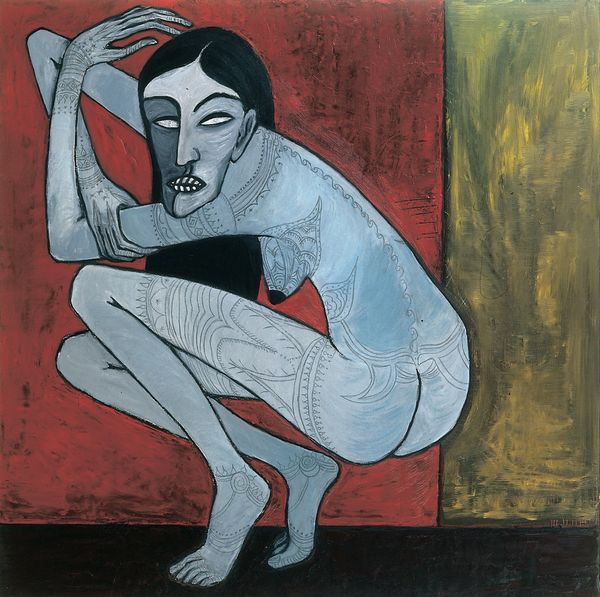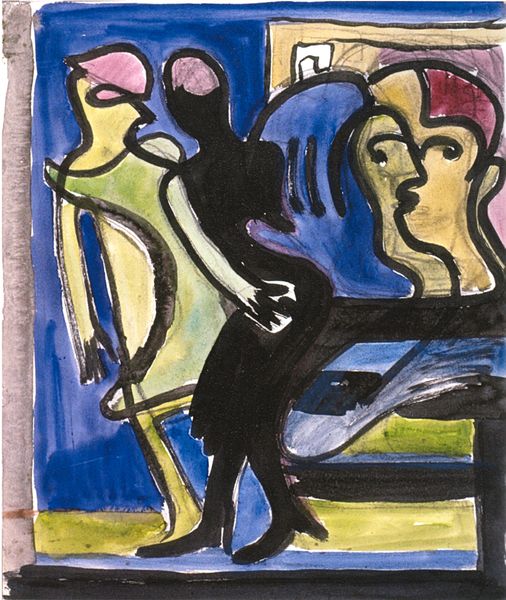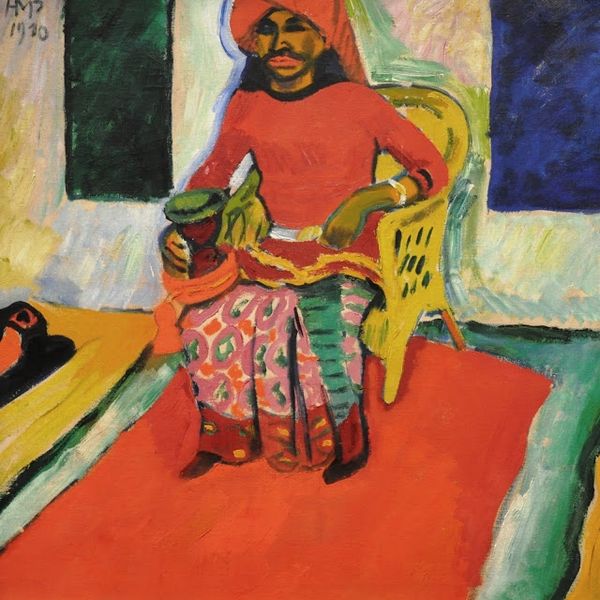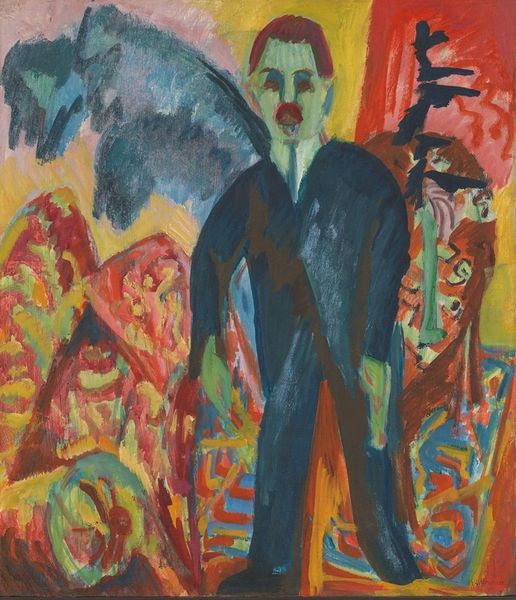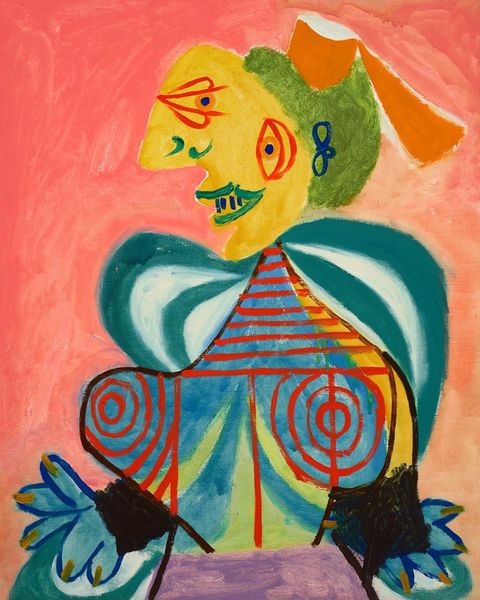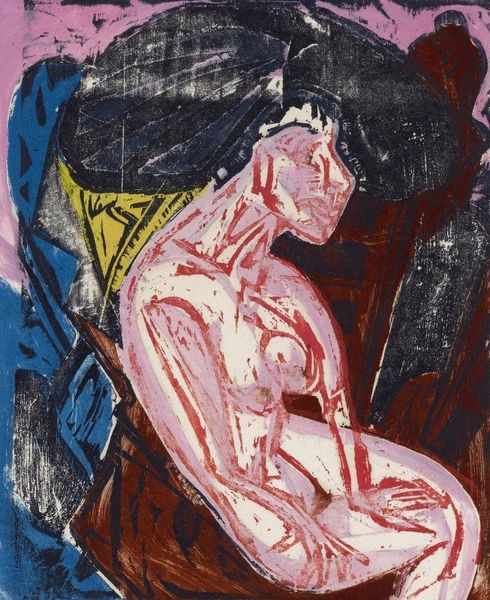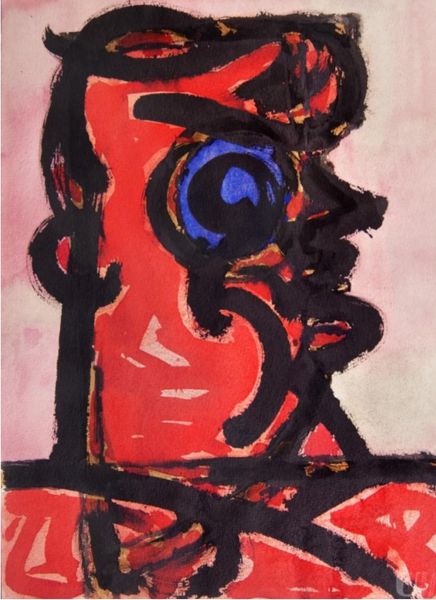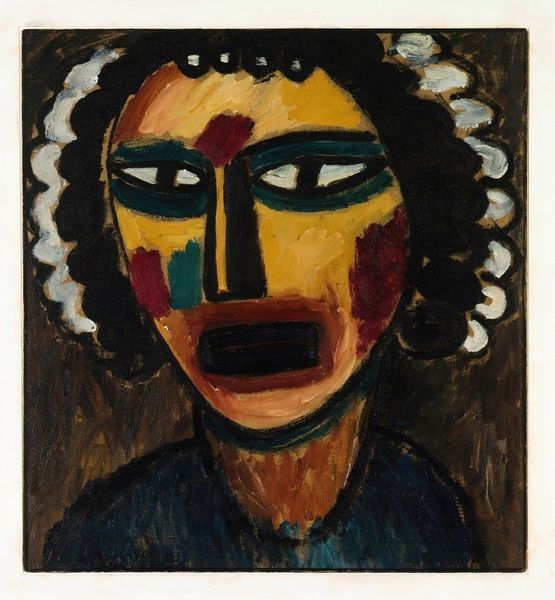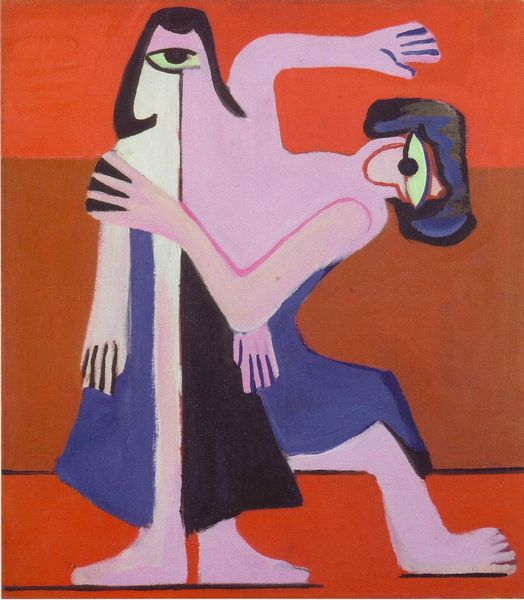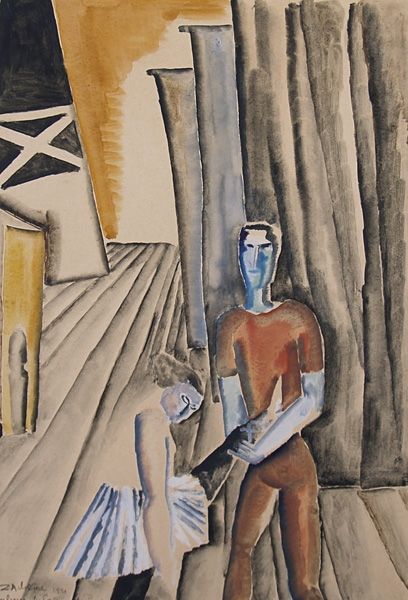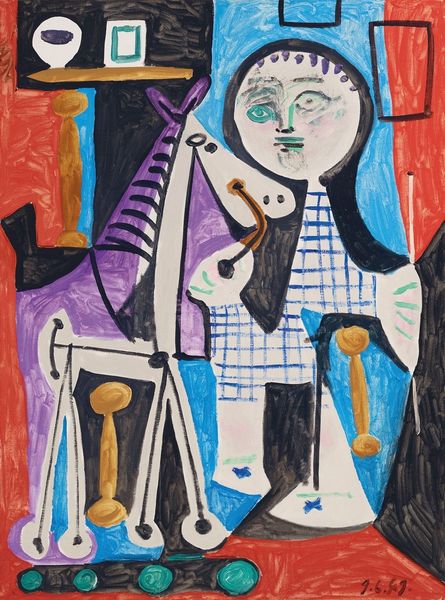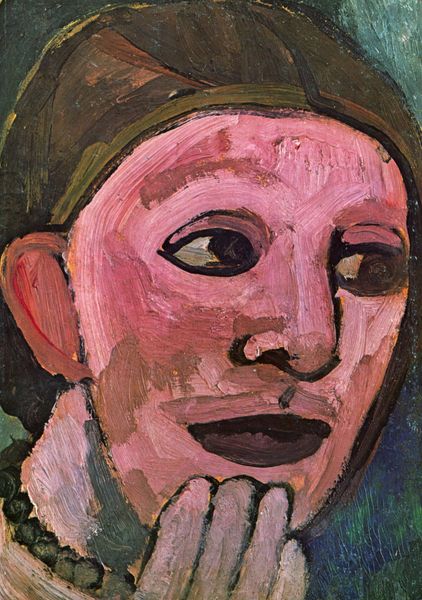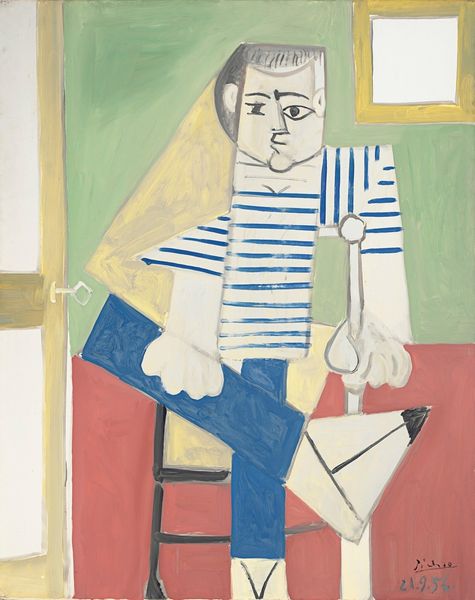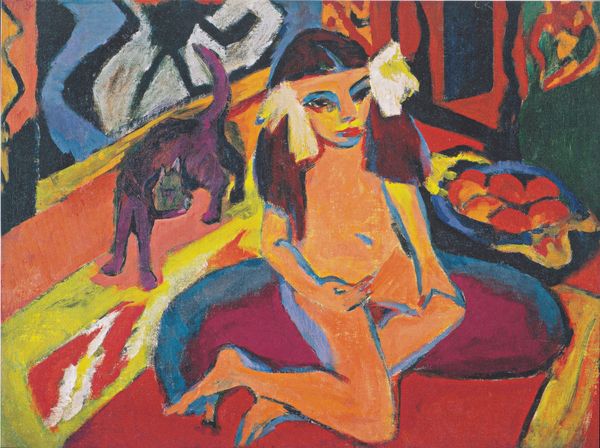
Copyright: Modern Artists: Artvee
Curator: This is Alexander Calder's 1945 painting, "Odalisque." It's an acrylic on canvas, and a rather intriguing interpretation of the classic odalisque theme. Editor: My immediate impression is how the boldness of the composition grabs your attention. The interplay between those stark blacks and yellows creates a visually striking image. There's an almost cartoonish quality to it, yet unsettling at the same time. Curator: Indeed. The odalisque figure as a subject was traditionally about objectifying the female form, especially within a Western, colonial gaze. Here, though, Calder almost seems to be subverting that tradition through a rather stylized almost confrontational approach. The painting was done just at the end of the second World War and during a time of shifting social conventions. Editor: It is as though Calder deliberately rejects conventional forms of portraiture. Look how the breasts are simply lemon-yellow forms, seemingly stuck onto the torso. It lacks any attempt at realistic representation. Instead, its strength lies in its visual grammar. The geometry is simplified to planes and lines, like a childlike figure or drawing. Curator: This connects to Calder's broader artistic practice of that period, he's most renowned for his mobiles and sculptures, but his paintings, like this, reflect a similar desire to reduce form to its essence. And considering that at the time there were multiple global influences hitting American art due to migration. There's that combination with influences from surrealism, expressionism and of course abstract painting trends that led to interesting new configurations. Editor: Exactly, notice the balance in the composition? How the bright window in the back complements the turbaned figure. Also, it’s painted on canvas so it has these wonderful matte colors with just subtle texture but no illusionistic effects. Curator: I think you have helped us unravel this piece a bit more, how historical and artistic trends intersect and collide here is rather fascinating. Editor: Yes, thinking through materiality and how colors and forms build the experience provides great insights.
Comments
No comments
Be the first to comment and join the conversation on the ultimate creative platform.
